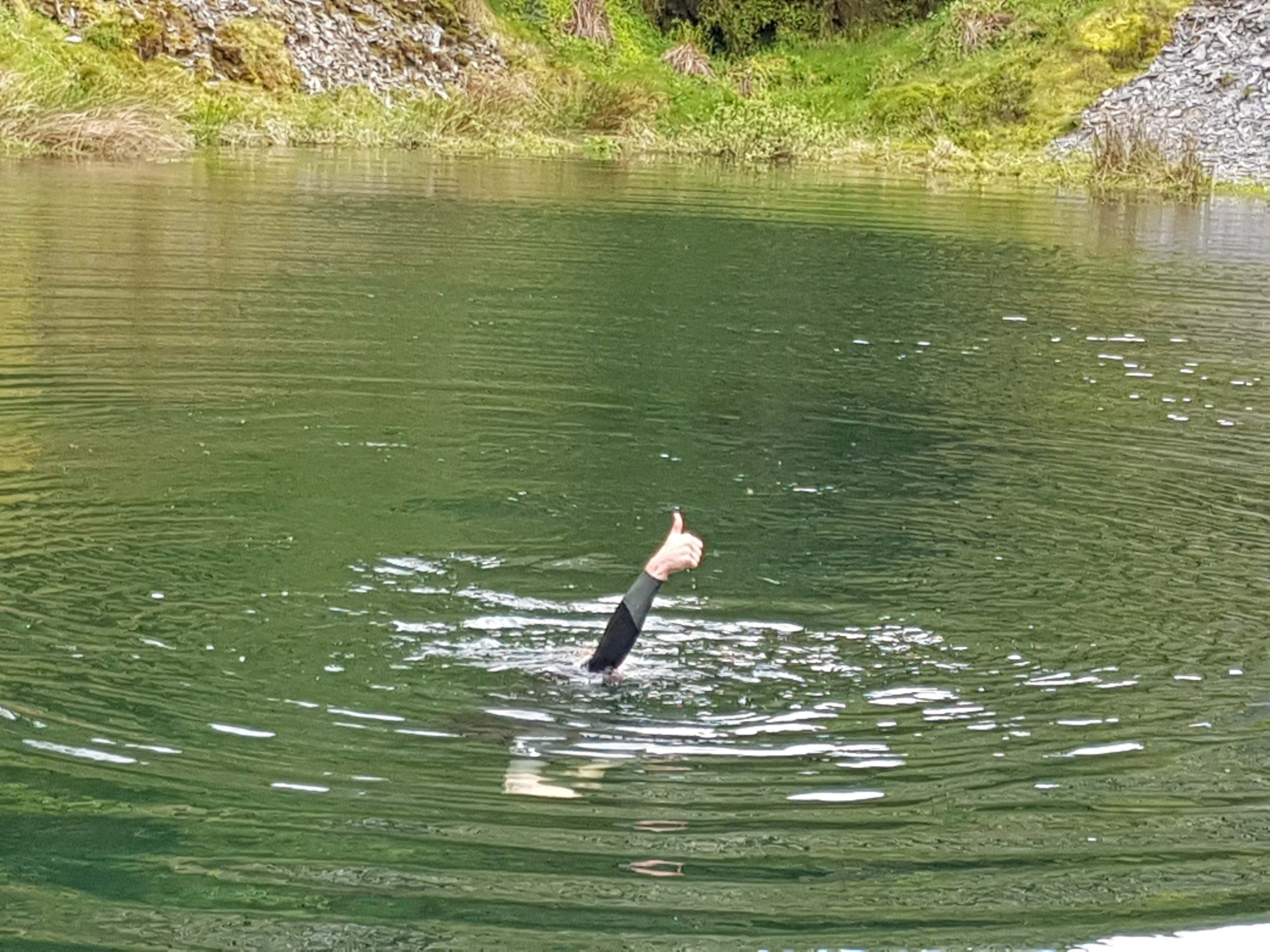We’ve been working this week with someone who almost drowned as a child.
Being in the water has always been likely to excite her fear reflexes.
So the work for her is all about learning not to react; to submit to the support of the water and do nothing. It’s the same for all non – swimmers but especially important for anyone who’s had a traumatic experience.
Being happy with your face underwater has to be the starting point. Then the most important skill is floating like a jellyfish, just hanging loose in the water, going as deep as you can to find the support of the water, and being there long enough for regaining your feet not to be a problem but something that just happens.
Related to this is falling into a forward glide, resting your head, and waiting until momentum runs out before finding the floor with your feet.
Working towards being comfortable on your back, the following skills are very useful: Letting yourself sit underwater by leading with your back, so going under looking straight ahead and letting yourself drop without using your legs. Similar to this is lying on your back by extending your hips but continuing to look straight ahead with your face underwater.
In all these activities, if you manage not to react, you’ll find the support of the water, and subsequent tranquility, and if you continue not to react, regaining your feet will be easy.
So keep your neck free and enjoy quietness and stillness underwater. Floating without fear is the basis for swimming without stress, for adding more skills that enable you to keep moving forward and get air when you need it, but it’s more than just that.
When we swim in earnest, we often fail to contain our primitive reflexes, so we shorten the whole of the spine and gasp for breath. Whether or not we recognise it, swimming tends to overexcite, even when we do it with relaxation as our aim. That’s the problem with swimming up and down, and with trying to overcome fear of water by getting from one point to another without really trusting it to support you.
The risk of getting into trouble in water is greatly reduced for somebody who’s learnt not to react fearfully. But ‘learning to swim’ tends to be too much about making progress through the water, getting from a to b, and not enough about learning not to react.


